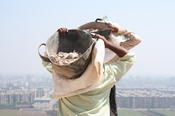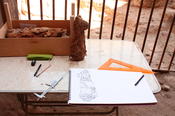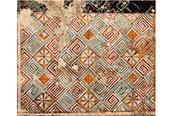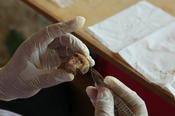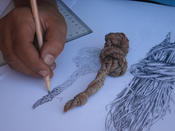Asyut – centre of ancient trade
Ägyptologisches Seminar
Freie Universität Berlin with Polish Academy of Science, University of Sohag and the Egyptian Ministry of State for Antiquities
- Dr. hab. Prof. IMOC PAN Teodozja Rzeuska (Warschau)
BEETHOVEN Classic 3: Deutsche Forschungsgemeinschaft & Narodowe Centrum Nauki (since 01.01.2020)
Asyut, situated c. 375 km to the south of Cairo, on midway between two ancient Egyptian capitals Memphis and Thebes, was a political and cultural centre of Middle Egypt since the First Intermediate Period (c. 2100 BCE) at the latest, and remained such to the decline of the Pharaonic epoch. The city formed a part of the cultural memory of Ancient Egypt and also had a highly strategic importance thanks to its location. Moreover, during the Byzantine and Islamic Periods, Asyut played, and still plays, an important superregional role in Christianity.
Asyut must also have been an important place on the map of the trade centres that took part in exchange already in the Antiquity. For the Pharaonic Period and Late Antiquity, the role of Asyut as a centre of merchandise became well-defined thanks the most recent research done by the project applicants on Gebel Asyut al-gharbi.
The aim of the project is to clarify the role of Asyut as a hub of trade during Pharaonic and Byzantine Periods (i.e. 3rd millennium BCE to 1st millennium CE) as well as to reveal what factors had shaped this trade in particular historical epochs.
The project will reconstruct the exchange of goods between Asyut and different countries/regions in Europe, Africa and Asia. It will show how closely connected the world was from the 2nd millennium BCE at the latest to the 1st millennium CE. It will help to understand the driving forces, the mechanism, and the consequences of the exchange of goods. The longue durée of the research subject will allow to show whether and how different religious and social environments in one and the same city had influence on international relations.
With its interdisciplinary approach, the project will achieve results of a transdisciplinary interest in respect to archaeology, trade, economy, and urban history.



